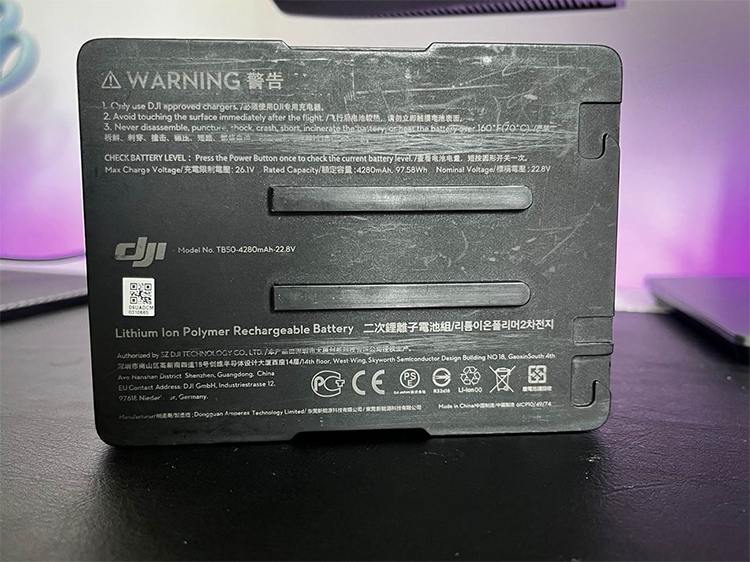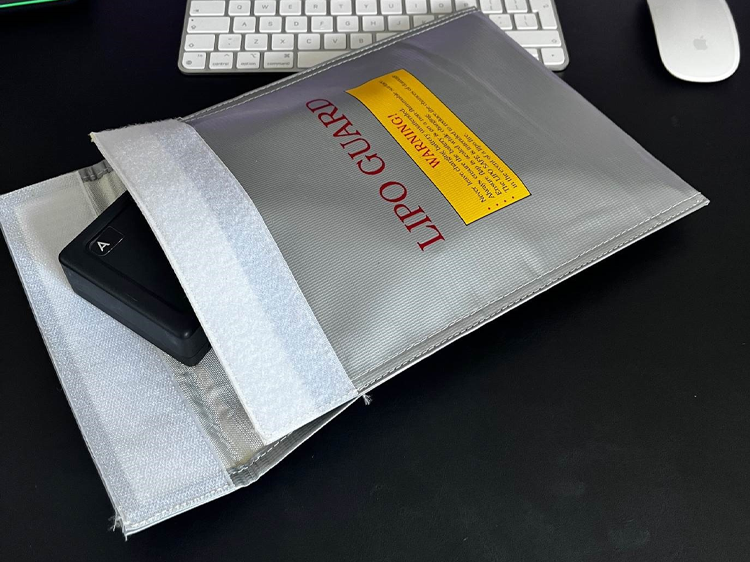Can You Take a Drone on a Plane?
Having a drone in your suitcase is now as essential as taking sun cream with you. However, there are several things you need to consider before taking your drone for a holiday.
Batteries
You may or may not know, but transporting Lithium Polymer (LiPo) batteries is classed as ‘Dangerous Goods’ which inevitably comes with restrictions and measures which need to be adhered to.
You will only be allowed up to two spare batteries and they will need to have a limit rating of 100-watt hours (Wh) per battery, this can be found on the packaging or on the battery itself.
TB50 battery example:

The spare batteries must be carried in your hand luggage during transit and they must be protected, terminals protected, free from damage/swelling and not on a recall list. To ensure they are protected and to stop the fire from unexpected combustion, it is highly recommended they are transported in a LiPo bag.
These bags are designed to contain the battery so that nothing else burns.
Lipo bag with 2 TB50 batteries:

If possible, keep your drone and batteries together in your hand luggage. This is the safer option and you can keep an eye on them. This also lowers the risk of your drone and accessories getting damaged when your hold luggage is put into the cargo hold underneath.
So, you’ve got through customs, made the flight, checked in and off to get those influencer-style shots… but have you checked the local laws?
Local Laws
Checking the laws in the country you are travelling to is must before you pack your drone. All EU countries fall under the European Union Aviation Safety Agency (EASA), these countries include:
| Bulgaria | Greece | Austria | Belgium |
| Denmark | Croatia | Cyprus | Czechia |
| Germany | Estonia | Finland | France |
| Italy | Hungary | Iceland | Ireland |
| Luxembourg | Latvia | Liechtenstein | Lithuania |
| Poland | Malta | Netherlands | Norway |
| Slovenia | Portugal | Romania | Slovakia |
| Spain | Sweden | Switzerland |
As a hobbyist flying in these countries, you will need to adhere to the following generic rules:
Do NOT fly over people
Do NOT fly in/near urban, industrial or commercial areas (stay 150m away)
Do NOT fly at night
Do NOT fly over 100m
Do keep the drone in visual line of sight at all times
Do register with EASA as the drone operator - https://www.easa.europa.eu/en/domains/civil-drones/naa
Categories within EASA:

Toby Townsend, Drone Specialist & GVC Instructor